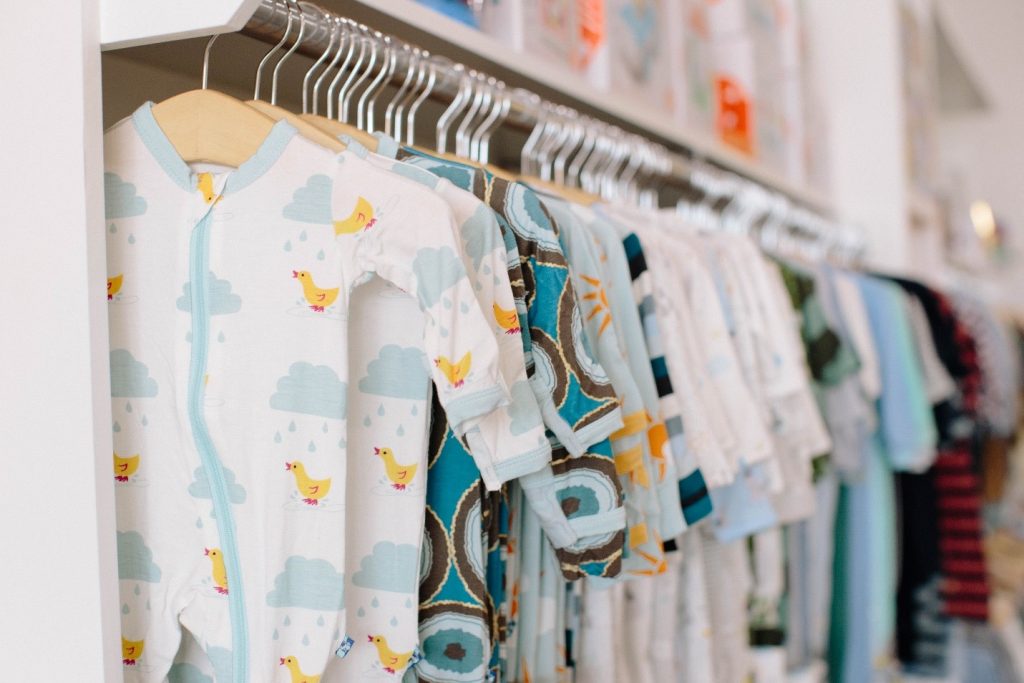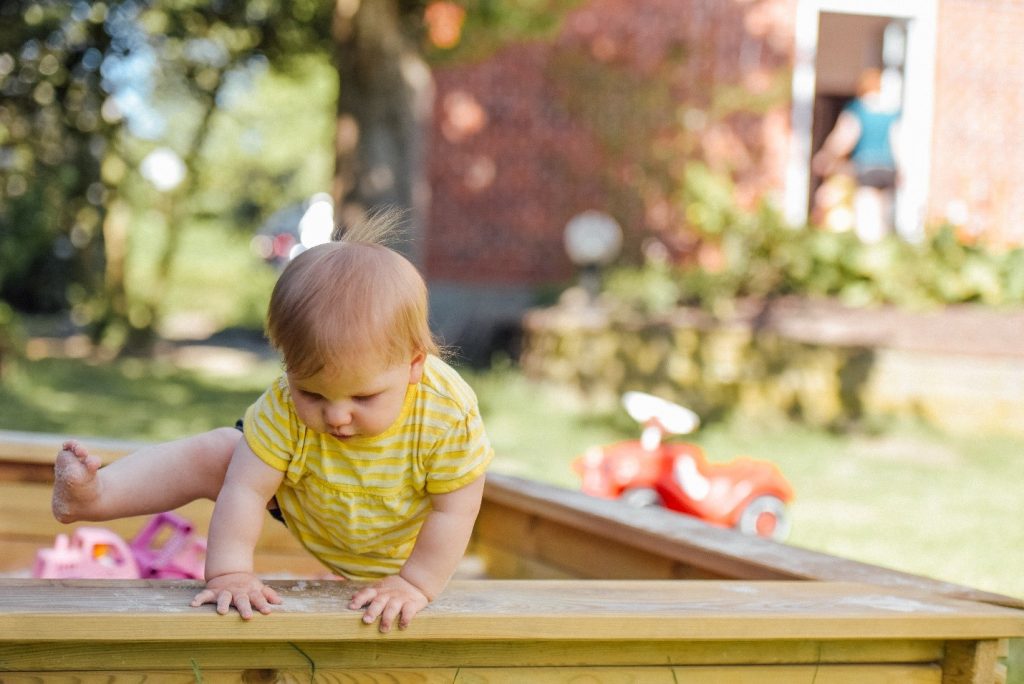Onesies are great options for babies. Aside from being stretchy and comfortable, you can get onesies in all designs to really make your baby look absolutely adorable. Unfortunately, babies can’t wear onesies forever. At a certain point, they will have to stop wearing onesies and begin wearing grown-up clothes. However, some parents might be wondering when do babies stop wearing onesies.
Onesies typically dominate a baby’s wardrobe for the first two years. The most prevalent factor for parents deciding to stop dressing their babies in onesies is potty training as it becomes quite inconvenient. Another major factor is the ability of a baby to walk as a mobile baby can be difficult to put in a onesie, unlike an immobile baby. Lastly, some parents decide that their toddlers have to transition to new toddler clothes, leaving the onesies behind for babies.
This article will discuss the various factors to consider deciding when your baby should stop wearing onesies.
Why Babies Wear Onesies

-
Convenience
There are a number of reasons why babies should always have onesies in their wardrobes. One of the most important reasons why parents should always consider dressing their babies in onesies is the convenience.
Taking care of a baby can bring numerous challenges. However, the typical tasks that are repeated on a regular basis include feeding the baby, letting the baby rest, and changing the diapers. Those three tasks can take up most of a parent’s day and anything that can help lighten the load should be welcomed.
Onesies are great options for babies as they are incredibly convenient for diaper changing. Compared to other forms of clothing for babies, onesies provide easy access to a baby’s bottom, making changing the diapers significantly easier. Instead of having to take off a baby’s bottoms (e.g., shorts, pants, etc.), a onesie can easily be snapped off at the bottom. Once the bottom latch is undone, you can then proceed with changing the diapers without having to take anything else off.
-
Complete Outfit
Parents will always want their babies to look their best. This is especially applicable for parents who enjoy dressing their babies up in adorable outfits. Parents who dress their babies in onesies know the value of the fact that onesies are already complete outfits.
Being complete outfits on their own, parents don’t have to decide what top or bottom the baby has to wear. Parents can simply grab a onesie from the wardrobe and call it a day. Not only can this shave a few seconds off a parent’s day, but it also helps lighten a diaper bag. Since onesies will take up less space than having to keep both tops and bottoms in a diaper bag, having a change of onesies saves up space.
Additionally, some parents swear that they find it easier to get their baby to wear onesies compared to other forms of clothing.
When Do Babies Stop Wearing Onesies
Unfortunately, babies will eventually have to stop wearing onesies. Here are some factors to look out for to determine when your baby should stop wearing onesies.
-
Potty Training
Probably the most common reason why parents begin to transition their babies away from onesies is the onset of potty training. Potty training is an important milestone in a child’s life. Typically occurring between 18 to 24 months, potty training allows children to pee and poop in a toilet all on their own.
Potty training can be an especially difficult time and onesies can just make the experience a whole lot more difficult. For one, children can have difficulty undoing the bottom latch of a onesie on their own. Additionally, full-length onesies will have to be taken off for a child to go potty training. Thus, wearing onesies during this developmental stage becomes a nuisance.
During potty training, children are transitioned from onesies to clothing that can be pulled down. While these can be traditionally a shirt and shorts, some parents opt to have their children wear training pants during the transition. Touted as a great way to train children from diapers to underwear, training pants are similar to underwear but with multiple layers of fabric in the crotch area for absorption. The extra padding accommodates accidents while still feeling like a grown-up pair of underwear.
-
Walking

Another common reason parents have for doing away with onesies is that their babies have begun to walk. Developing the ability to walk can take babies a long time. Since babies develop at their own pace, the range can be between 8 to 18 months. However, an average baby can take their first few unassisted steps by 12 months.
While parents understandably celebrate their babies’ walking as an incredible milestone, this can become an issue with onesies. As mentioned, onesies can be easy to put on a baby. However, that was specifically the case for babies lying on their back. When babies begin to walk and move about, it can be challenging to keep them down. Thus, parents have to adapt and develop a system of dressing up their baby standing up.
Unfortunately, dressing up a standing baby with a onesie is just too inconvenient. At this point, a baby can easily just wear a shirt and diapers. With a shirt and diapers, parents can have no problem getting a shirt on or off with the baby standing up.
Furthermore, full-length onesies that have feet can potentially be a slip hazard. With your baby practicing how to walk, it is safer to have them barefoot to have good traction with the floor.
-
Aesthetic
Parents get to decide how to dress their babies. Once babies are born, onesies are undeniably a cute option. However, some parents believe that babies can soon outgrow their onesies. Various forums can be found with mothers stating they love seeing their babies’ pudgy things in onesies. Inevitably, babies can eventually outgrow their infantile dimensions.
It is important for many parents to dress up their children in outfits they like. As soon as their babies become toddlers (i.e., at around 1-3 years old), many parents opt to switch up their children’s wardrobes from a baby to that of a toddler. This wardrobe can include shorts and shirts for boys while girls have dresses. While their day clothes have changed, toddlers can still wear onesie pajamas for sleeping.
Final Thoughts
While parents may consider different factors when to stop having their babies wear onesies, it ultimately depends on convenience. With a newborn baby, onesies can be significantly convenient as a form of clothing as they were easy to put on and off a baby.
However, the convenience begins to diminish once the baby begins to stand and walk. At a certain point, having the baby wear a shirt and diaper makes it so much easier to check for a dirty diaper as one could simply check the diaper directly, instead of having to sniff a baby’s butt. Furthermore, onesies simply become an obstacle during potty training.